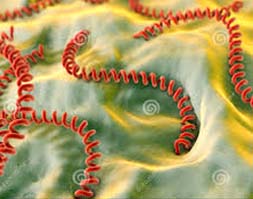Human leptospirosis: a strategy of overcoming
Keywords:
PRIMARY HEALTH CARE, LEPTOSPIROSIS, LEARNING.Abstract
Introduction: postgraduate professional training is a set of teaching-learning processes that makes possible to improve professional performance based on the needs identified when implementing the strategy. Human leptospirosis is an infectious disease that requires immediate and accurate response of the health professionals from the primary care system.
Objective: to design a strategy to improve the professional performance in human leptospirosis favoring this way the integral management of specialists in Comprehensive Medicine.
Development: to conduct this study, empirical, theoretical and statistical-mathematical methods and procedures were used, along with the review of the current regulations for the construction of pedagogical strategies, as well as articles and methodological norms for their design. The criterion of experts was considered to validate the scientific product.
Conclusions: it is proposed, based on the results of the diagnosis, the design of a strategy to train specialists in Comprehensive Medicine working in Primary Health Care aimed at strengthening the development of professional skills that allow prevention and promotion actions, as well as a timely clinical-epidemiological diagnosis and to establish the protocol of leptospirosis management. It is necessary to unite the quality of the training of health professionals in the field of human leptospirosis. This work demonstrates the need of implementing a strategy to train the specialists in Comprehensive Medicine which is necessary to develop the integral management of the disease from the primary health care.
Downloads
References
1. Costa F, Martínez-Silveira MS, Hagan JE, Hartskeerl RA, Reis MG, Ko AI. Surveillance for leptospirosis in the Americas, 1996-2005: a review of data from ministries of health. RevPanam Salud Pública [Internet]. 2012 [Citado 2017 mar 02]; 32(3): [Aprox. 8p.]. Disponible en: http://www.ncbi.nlm.nih.gov/pubmed/23183556
2. Verdasquera Corcho D. Leptospirosis humana: un abordaje de su epidemiología en Cuba. Tesis para optar por el título de Doctor en Ciencias Médicas. La Habana: IPK; 2011. Disponible en: http://tesis.repo.sld.cu/315/
3. Pérez Elias Y, Obregón Fuentes A M, Rodríguez Reyes I C, Alfonso González M J. Actualización en el diagnóstico de la leptospirosis humana. Rev Cub Med Mil [Internet]. 2015 Dic [Citado 2017 mar 07];44(4): [aprox 3p]. Disponible en: http://scielo.sld.cu/scielo.php?script=sci_arttext&pid=S0138-65572015000400006&lng=es.
4. Cuba. Ministerio de Salud Pública. Programa Nacional de Prevención y Control de la leptospirosis humana. Ciudad de La Habana: MINSAP; 1997 segunda versión. [Citado 02 de marzo de 2017]; Disponible en: http://files.sld.cu/sida/files/2012/01/programa-leptospirosis.pdf
5. Galindo L, Arango Rave ME, López Núñez JA. Orientaciones en didáctica para la formación de competencias en los posgrados médicos. Investigación en Educación Médica[Internet] .2015 abr-jun [Citado 2017 mar 02]; 4(14): [aprox.3p.].Disponible en:http://www.sciencedirect.com/science/article/pii/S2007505715300417
6. Cruz Soriano R , Boullosa Torrecilla A , Guevara Reyes O. Resultados más significativos del posgrado en una universidad cubana. Perspectivas del proceso desde el contexto del municipio [Internet]. 2014 [Citado 2017 mar 06]; 5(14):[aprox.15p.].Disponible en:http://www.sciencedirect.com/science/article/pii/S2007287214703038
7. Resolución Ministerial 132/2004: art. 3: 2p; Instrucción No 3 del MES, 2008.
8. BacallaoGallestey G. Planteo y diseño de la investigación cualitativa. Maestría Educación Médica. Escuela Nacional de Salud Pública. Ministerio de Salud Pública. Material de Estudio. La Habana; 2004.
9. Urbina Laza O. La educación de posgrado en las universidades médicas cubanas. EducMedSuper [Internet]. 2015 Jun [Citado 2017 mar 10]; 29(2): [aprox.2p.].Disponible en: http://scielo.sld.cu/scielo.php?script=sci_arttext&pid=S0864-21412015000200017&lng=es
10. Rodríguez Pérez R, González Gómez AI, Palacios Arias A. Leptospirosis en el entorno actual. RevElectronica Dr. Zoilo E. MarinelloVidaurreta. [Internet]2014[citado 2016 mar];39(12):[aprox. 2 p.].Disponible en :http://www.ltu.sld.cu/revista/index.php/revista/article/view/182/243
11. González Rodríguez Raidel, Hernández Valdés Jannet, Santana Márquez Madalina, Mena Mató Anne Marie, Santaya Labrador Juan Miguel. Ambiente organizacional docente-investigativo del Policlínico Universitario "Pedro Borrás Astorga" de Pinar del Río. Rev Ciencias Médicas [Internet]. 2017 Feb [citado 2017 Jun 14] ; 21( 1 ):[aprox7p ]. Disponible en: http://scielo.sld.cu/scielo.php?script=sci_arttext&pid=S1561-31942017000100011&lng=es.
12. Agramonte del Sol A, Farres Vázquez R, VentoIznaga FE, Mederos M, Dueñas M, Pallasá Cádiz JL, et al. Consideraciones sobre la educación de posgrado en Enfermería. Rev Cubana Enfermeria [Internet]. 2011 sep.- dic [citado 2011 ene 11]; 27 (4).Disponible en: http://scielo.sld.cu/scielo.php?script=sci_arttext&pid=S0864-03192011000400003&lng=es&nrm=iso&tlng=es
13. García Batista G, Addine Fernández F, EspíLacomba N, del Canto Colls C, Hernández Ciriano I M, Recarey Fernández S, et al. Modelo para el postgrado en la universalización de la educación superior. Ministerio de Educación; 2009.http://biblioteca.uniss.edu.cu/sites/default/files/CD/pedagogia/cursos/pdfp2009/Curso10.pdf
14. Partido Comunista de Cuba (PCC): Lineamientos de la política económica y social del Partido y la Revolución, VI Congreso del Partido de Cuba. La Habana; 2011.http://www.cubadebate.cu/noticias/2011/05/09/descargue-en-cubadebate-los-lineamientos-de-la-politica-economica-y-social-pdf/#.WcDYkkfYX0M
15. -Castro R. Discurso pronunciado el 26 de julio de 1997. Ediciones Verde Olivo. La Habana: Editorial Científico Técnica;1997.[Citado 2017 mar 10] Disponible en : http://www.granma.cu/granmad/secciones/raul26/

Published
How to Cite
Issue
Section
License
Authors who have publications with this journal agree to the following terms: Authors will retain their copyrights and grant the journal the right of first publication of their work, which will be publication of their work, which will be simultaneously subject to the Creative Commons Attribution License (CC-BY-NC 4.0) that allows third parties to share the work as long as its author and first publication in this journal are indicated.
Authors may adopt other non-exclusive license agreements for distribution of the published version of the work (e.g.: deposit it in an institutional telematic archive or publish it in a volume). Likewise, and according to the recommendations of the Medical Sciences Editorial (ECIMED), authors must declare in each article their contribution according to the CRediT taxonomy (contributor roles). This taxonomy includes 14 roles, which can be used to represent the tasks typically performed by contributors in scientific academic production. It should be consulted in monograph) whenever initial publication in this journal is indicated. Authors are allowed and encouraged to disseminate their work through the Internet (e.g., in institutional telematic archives or on their web page) before and during the submission process, which may produce interesting exchanges and increase citations of the published work. (See The effect of open access). https://casrai.org/credit/


